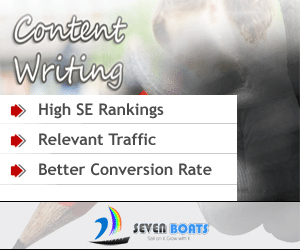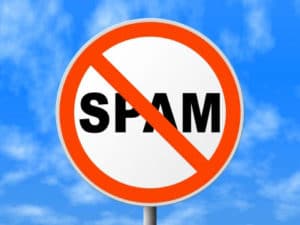
A how-to guide on writing compelling newsletter. This is detailed guide for everything you need to know and do for a Successful Email Campaign.
Newsletters have lost their elite tag. Online brands and businesses are increasingly making use of newsletters to inform, update and touch base with their customers. At the same time, the factors and yardsticks that measure newsletter success is dynamic and changes according to the demands of the Internet industry.
Internet Service Providers (ISPs) and Email Service Providers (ESPs) also have a role to play. In such a scenario, this tutorial on “How to Write Compelling Newsletter” will help newsletter writers not just to draft useful newsletters, but also ensures that you understand the back-end of newsletters. This tutorial is a complete guide to budding as well as experienced newsletter writers. Check these tips to write killer newsletters.
Newsletter Planning
Why You’re Writing Newsletters

Newsletters have become the norm for targeted online marketing. Most businesses that depend on e-marketing are now banking heavily upon newsletters. Because of this added responsibility, newsletters have also changed in tone and template.
You are no longer writing newsletters to boast about your achievements to your steady base of customers. Instead, you are drafting smarter newsletters to enable more customers to join your network.
As for the existing customers, newsletters have become vehicles of introducing and launching new products and services. As a newsletter writer, your responsibilities have doubled up. Let us now look at some of the purposes served by newsletters and what is expected from a newsletter writer.
A newsletter, on a very basic level, is a letter carrying news. By news, one means updates, alerts, announcements and general information. Companies operating in the online domain have to rely on newsletters to intimate their existing customers about different matters. It could be of interest to the customers, like new products and services.
It could also be a change in policies on the part of the company and how it would benefit the average customer. Whatever be the reason you’re writing the newsletter, you have to keep your target readers in mind. That is the key to fulfilling the purpose of a newsletter.
For example, if you’re writing to inform the readers about new products, ensure that your writing sounds exciting and fresh. You obviously cannot expect your readers to be excited about a new product if you write a drab newsletter!
Another reason why you’re writing a newsletter is to touch base with your customers. Most of your customer base might contain buyers who have entered your subscribers’ list, but have remained dormant after making the first purchase. Now your task as a newsletter writer is to get these customers into making a fresh investment in the client’s new line of products and services.
How do you approach them? You have to pick up the thread of conversation from their last buy. Are they happy about their association with your client’s brand? Are they satisfied with the customer service that they have got after the sale? Your writing must be concerned about older ties before you forge new ones. Your boost here is that they have already experienced what your client can provide. Use this comfort level as a pivot to anchor new sales.
Finally, you’re writing a newsletter because you want the reader to respond in some manner. The writing style must contain many action words that compel the reader into clicking through to the client’s products and services web page. In cases of newsletters written for the purpose of opinion gathering or surveys, the writing must urge them enough to join your opinion poll. Unless the reader gets back to your client’s business in one form or the other, your newsletter has not served its purpose. The click through rate (CTR) is a major metric to determine your success as a newsletter writer.
What Readers Look for in Your Newsletter

The response of readers to your newsletters completes the process. If your newsletter receives an adequate number of readers clicking on web links inserted in the copy, you can take the credit for writing a fine copy.
At the same time, readers not showing any kind of interest in responding in some form or the other spell bad news for your newsletter.
When readers click on anchor text links, or any other web link on your newsletter copy, it is counted as Click through Rate (CTR). This is usually the yardstick to measure how people have responded to your writing. The higher the percentage, the more successful your work is.
Now that you have a fair amount of idea on how your newsletter is more likely to be measured, let’s take a quick look at what readers are looking for in your writing. Firstly, newsletters have to make an interesting and engaging read. Newsletters come as email, so the chances of readers sending it to the Trash folder is high if your writing is drab and monotonous.
No matter what the topic you’re writing on, ensure that your newsletter is packed with smart ideas put forward in a comprehensive manner. Do not go overboard by showcasing your writing abilities. Readers are not interested in your armory of writing weapons. They want quality content. Period.
Secondly, while writing newsletters place your anchor text links judiciously. Anchor texts are those hyperlinks that you insert over a word or phrase within the content. Don’t pack in too many of these web links together. That distracts the reader. It also confuses the readers because there is too many of them demanding their attention to click. Moreover, the fluidity of your content is hindered. Online marketers will surely want to use many anchor texts. As a writer, you need a certain amount of editorial control. Use anchor texts sparingly. That will increase the CTR and also please the average reader. For example, in a paragraph of the length that you’re reading now, you should not use more than 2 anchor texts.
The length of a newsletter is of vital importance. Remember a basic difference between a newsletter and web page content. An online reader goes to a web page to read it; a newsletter comes to the inbox of a subscriber. So, it is normal human psychology for readers to be more impatient about newsletters because he’s eager to read the other unread emails waiting in his inbox. What does such a reader do with a really long, winding newsletter? He chucks it aside and reads the other emails! A newsletter writer has to be cautious about the length. Do not go around in circles to get to the point. Use action words that urge the reader to respond. Keep the reader’s attention under your grip. Your skills in persuasive content writing will be tested to the hilt when you’re writing newsletters.
Newsletter Writing
Subject Lines to Increase Opens in Newsletter
Learn how to write subject lines to increase opens in newsletter. Tips and tricks to write subject lines that would increase clicks on newsletter

As a newsletter writer, it is your job to get as many readers to read your content as you possibly can. The more the number of readers or subscribers, the greater will be your chances of getting more click-through for your client. Now, you have to understand here that getting more people to read is not directly linked to your newsletter content.
One can read your work only after clicking on the email inbox folder where it resides. Unless the person opens your newsletter, your content is not getting viewed. Naturally, all subsequent processes like clicking through to web pages or responding to surveys stops right there. In other words, getting subscribers to open your newsletter is of vital importance.
You have to think like an email delivery specialist here. What affects opens in newsletters? Keeping factors like delivery into the inbox and not spam box and other such factors aside, it is the subject line on the email that decides opens.
After reading a subject line, the reader makes a split-second decision to read or bypass the newsletter. Writing a crafty subject line is a lot like copy writing. You have to come up with something witty, something that makes people curious. Email users will click and read your newsletter only when they feel that there is something in your copy that they might need or like. It is only by the force of this pull that you can make someone read your newsletter.
There are some pointers that you have to keep in mind when it comes to writing a subject line for your newsletter. Keep it confined within 45 characters. Note again that it is not 45 words. This is the number of characters that is visible on the subject line space in a typical email inbox. Anything exceeding this limit spills over and the email user cannot read the rest of your subject line unless he clicks on it. That is a bad idea in itself because your subject line appears incomplete to your reader. The next point is to keep the subject line relevant to the content of your newsletter. Do not draft gimmicky subject lines just for the sake of opens. You might get people to open the newsletter first time around but a disappointed reader might mark it as spam! Try not to deceive your reader.
Sharpen your editorial skills for the subject line of a newsletter. You have got limitations. You have got to keep it smart and provocative. Pull out your thesaurus or dictionaries! Get cracking on a mix of words that best describes your newsletter. To put it more succinctly, treat your subject line as a tagline for your newsletter. What phrase of words sums up your newsletter? That is your subject line! A note of caution needs to be sounded here. Avoid spam words or those that trigger spam filters. Then your newsletter might head to the Spam box instead of the inbox.
Get More CTR on your Newsletter

Let us refresh our memory about CTR. CTR stands for Click through Rate. On a very basic level, CTR is the ratio of the number of web links a newsletter reader clicks while reading the content. Suppose you have sent out 100 newsletters and 4 web links have been clicked upon, the CTR is 4%. Other variants to this rule also apply. It depends on the company which metric they would define as CTR. There are some misconceptions about CTR that is needed to be debunked at the very onset of our discussion. To begin with, cramping in more web links inside your newsletter creative does not necessarily mean more CTR. In fact, you might find your CTR tanking below expectations! Believe in the maxim, too much emphasis is no emphasis at all.
Avoid falling into the trap of packing in more web links in the form of anchor texts. Instead, write in a way that makes people click on the few links that you provide. It is your content that plays the most vital role in increasing CTR. You have to follow the rules of newsletter writing strictly. For example, you have to be particularly aware of your target readers. You need to know why you’re writing and for what purpose. That will condition the linguistic style and the use of words, syntax, etc. A B2B newsletter will be conceptually different from a B2C one. Similarly, an information oriented newsletter will be written with lesser marketing approach than one that looks to sell products or services. It is the readers that dictate the stance of the newsletter writing.
Be relevant to your topic at all time when you draft a newsletter. Digressing from your point to create more linkable words or phrases will spell doom for your copy. Your writing will lose focus. You will move away from your topic. The length of your newsletter might bloat up as well. Stay within the confines of your subject and incorporate web links where it is necessary. That will increase your CTR.
Remember that people are reading your newsletter because they want to know more about the subject you’re dealing with, not to click through to other web pages. That comes after they are engaged in your content. To keep them interested and zapped, you’ve to write relevant newsletters in a conversational style. Again, think how relevant your material is for target readers.
There is something about anchor texts that you need to know to drive up the CTR. Insert your web link on action words rather than on simple words or phrases. As an example, you will get more clicks on ‘Do it now’ rather than on ‘business is good’. The psychology of the reader would be to feel that if they click on the anchor text, their response will generate something or be registered in some way or get something done. Action words can have that effect. Also, it is important to spell out clearly rather than be subtle. A link saying ‘Subscribe Now’ will surely have more clicks than another saying ‘Register your Subscription’.
Make Your Newsletter Personal
The Internet is a medium that thrives on its ability to personalize communication. Make your newsletter personal and increase brand loyalty.

The Internet is a medium that thrives on its ability to personalize communication. The importance of your online identity is the crux of your online experience. That is why e-marketers are always looking at possible ways to customize business solutions for their customers.
As a newsletter writer, you have to adopt and adapt to this line of thinking. Your newsletters have to be written with a target reader in mind. Moreover, your writing must be like a letter or personal email that you’re writing to a known contact. The reader must get this personal vibe while reading your newsletter. That is a prime reason why readers will take greater interest in your writing.
The responsibility of personalizing newsletters lies with the entire newsletter team. The initial salutation must contain the name of the subscriber. You’ve got little to do here as a writer. Your job kicks in when the reader starts to read the newsletter. There is something engaging about content that is written with the perspective of the reader in mind. It is a cardinal rule of modern marketing that you have to put your customers and consumers in the fore-front. They are not interested in your products’ features and services. All they care about is how these features will help their cause. Readers approach newsletters with the same view. What can they benefit from your newsletter? Give them valid reasons and your newsletter will be a success!
You’re not the only newsletter writer in the arena! Neither are you the only good writer around! So, why would anyone read your newsletter and ignore the others awaiting their attention in the email inbox? Answer this question every time you have to draft a newsletter copy. Write with this perspective in mind. Offer your readers something that they don’t get anywhere around. On the Internet, you’ve to be unique to survive. Imitating or ripping off another newsletter’s writing style and template will not help your cause.
You’ve to find your own USP. Think of the products and services, or the information that you want to sell to your readers through the newsletters. How can they be best presented? With the target readers in mind, develop a personal writing style, like a one on one conversation with a confidant. Build up the trust.
In newsletter writing, you can make the experience personal by making the readers feel included in the growth of the client or brand you’re writing for. Readers, and subsequently customers, need a voice. Your newsletter can give them that voice. Give them the inside story, make them feel part of the development process. That will not just make your newsletters widely appreciated, but also create loyal brand followers out of casual consumers. As a writer, never lose focus of your goals that you want to achieve through the newsletter. It is not a testimony to the writer in you. It is a vehicle to make a personal connection of the brand with its consumers.
Newsletter Writing Mistakes to avoid
Learn how to avoid common mistakes in newsletter writing. Discussion on newsletter writing mistakes & Excellent newsletter writing tricks.

Just like any other form of writing, newsletter writers can fall into traps that result in mistakes. Many of these mistakes occur because of incomplete knowledge about the craft, or the medium you’re writing for. Though newsletters are written for e-marketing, it is very different from writing for web pages or websites. The reason is that online visitors choose to visit a website on their own to read the content. Newsletters are delivered to the email of subscribers who are, more often than not, disinterested in them. So, you’ve to be a smart writer to engage the attention of the reader and carry it through to the end of the newsletter.
In this process, mistakes can be counter-productive. A very common error is to use an impersonal newsletter. It is not just the style of writing that expresses indifference in making a personal connection with the subscribers. The initial salutation must contain the receiver’s name. It is very much possible to do that with the latest technology in database management. You can insert the first name of the subscriber and address the newsletter as ‘Dear Bob’ or ‘Hello Ryan!” This makes the subscriber feel a sense of belonging to the brand or your client. While writing the newsletter, maintain this personal touch. Write in the second person narrative, using ‘You’ for the subscriber and ‘We/Us’ for the brand you’re writing for.
Tone down the marketing message. Newsletters that pitch products and services too vociferously invariably end up in the Trash or Spam box. Dilute your marketing motive with carefully and masterfully crafted prose. Let the reader enjoy the experience of reading the newsletter. No one likes something to be pushed down their throat. It would be much better if you wrapped your marketing words and phrases in lucid, engaging content.
You cannot force a person to read the entire newsletter or click through on the web links and anchor texts that you provide. You have to convince the person through the artistry of your language. The desperation to sell must not come across blatantly in your newsletter copy. Maintain a healthy balance of 80% content and just 20% of marketing lines.
Make the newsletter pleasing on the eyes of the subscriber. Proper grammar and syntax is a must-have. Proof-read your copy before the post-writing work like inserting hyperlinks and images. Get rid of spam words or those that trigger spam.
Cleanse your newsletter creative off words like ‘offers’, ‘deals’, ‘girlfriend’ etc because they are most likely to set off alarm bells on the spam management software that email service providers use. If your content is packed with spam or ‘spammy’ words, your newsletter does not get a reader! It goes straight through to the spam box. Repeated instances will result in your IP address getting blocked. Moreover, leave white spaces in the newsletter for easy reading. Cramping every possible corner with words repel the reader because there is too much to read and the subscriber has other emails to attend to.
Tips to Write Engaging Newsletter Content
Before you hit the keyboards with an aim to write the best newsletter in the circuit, think again! There is no doubting your caliber as a writer, but do you really know what makes newsletters click with the readers? Your writing can make a better impact on your readers when you are aware of the mechanics involved in a newsletter. Understanding these factors will help you write better newsletters and also leverage the business you’re writing for. An average subscriber receives more than one newsletter daily in the inbox. Of course, the person will not be able to pay equal attention to all of these newsletters. You have to be the chosen one!
Engaging the reader’s attention through your newsletter is not easy. To begin with, you have to be reliable in terms of regularity. Ensure that you write consistently. The reader must begin to expect a newsletter from your end on a certain date and time. Stick to this routine! Don’t disappoint the reader by being a lazy writer! Reliability is a big factor is generating impact. The world of the Internet is fragile and fraught with deception. The reader knows that. If you can obtain the trust of the reader, you’ve already engaged his attention. Your content will be read with greater confidence in what you’re writing. In fact, if you’re regular in your writing, you can do away with marketing gimmicks and razzmatazz in your content!
When you’re writing a newsletter, you’re doing so for common readers. Don’t make your content verbose and dense. Your writing style has to be very light. Deal with your material with a touch of humor.
Understated humor goes a long way in making your reader go through your newsletter. Think from the reader’s point of view. Would you like to read through a newsletter packed with words that go on and on? You’ll lose interest in the writing easily. Your writing will be treated the same way if you’re not careful about the language and the length. Keep your points brief and relevant. Get a designer to do the newsletter template that leaves plenty of white space. Readers must not feel cramped. That will affect their response to your writing, if they read at all!
Be strict about quality while writing engaging content. Mistakes – spelling, grammar or otherwise – will cost you. Readers are easily put off by shoddy content. They are spending their time in reading your work. It is your responsibility to honor their attention. Just like you’d get rid of mistake, do your research. Do not provide half-baked data and statistics.
The Internet provides every netizen with the power to cross-check facts. Once you’re caught trying to take the reader for a ride, you can bid goodbye to your newsletter’s success. It is also against your principle as a writer. When you’re quoting data from reliable sources, you can include the web link in the newsletter. Be true to your reader and you’ll have his undivided attention.
Newsletter Guidelines
Beware of Spam in Newsletter Creative

You might say at this point that you’re a writer and so not directly concerned about spam issues in newsletters. You will be partly correct in this assumption. As a newsletter writer, you’re not concerned about the process of opt-in or other issues that are directly related to newsletter spamming. That is the domain of an email delivery specialist.
But, as a writer you’re certainly responsible from your end to ensure that the words used in the newsletter creative does not trigger spam filters. Now, a quick search on any major engine will reveal that there are many words that are categorized as spam words. Some are more mildly tagged as words which trigger spam. As a newsletter writer, these are your taboo areas.
It is true that spam filters are more intelligent these days. They can differentiate between spam words based on the usage. At the same time, it is also true that when bulk newsletters are sent, mildly spam words are often responsible in getting the ISP or ESP blocked. In such cases, your newsletter hits a dead end. You can no longer send newsletters through the blocked IPs. The email delivery specialist has to step in and get the IPs unblocked by getting in touch with ESP and ISP administrators. You’re a casualty of this problem as well because your newsletters are not getting to your readers. That is why it is very important to check your newsletter for spam words. Eject them from the creative so that your newsletter gets delivered into the inbox of the receiver.
Let us look at some of the spam words that you have to steer clear of. Words like ‘deal’ and ‘offer’ are considered hardcore marketing terms. Newsletters that are forcibly sent to receivers who have not opted to be subscribers usually contain these words. Spam filters are immediately alerted and the email is trashed in the Spam box. Words like ‘girlfriend’ or ‘pleasure’ are known to be associated with spamming as well, primarily because of the sexual content. The problem for newsletter writers is that you might use these words in a completely different context and yet trigger spam! You may be writing a beautiful love story through the newsletter. But as soon as you repeat the word ‘girlfriend’ a few times in the copy, you’ll be flagged as spam.
Another concern for newsletter writers battling spam is the length of the newsletter. You already have a valid reason for keeping newsletters crisp and short: the draining attention of the reader. Excessively long newsletters, packed with keywords, might be considered spam. As a writer you have to fall back on your knowledge of the language to keep the newsletters within a length that does not come across as intimidating. You might be tempted to hand over the problem of spamming to the technical team. However, it is advisable that you clear off the spam issues that your content can trigger. You owe it to your readers!
Anchor Text Secrets for Newsletters

Anchor texts can be loosely defined as those words or phrases that are hyperlinked to lead to external web pages or websites. For example, the word ‘Services’ is called an anchor text if it is hyperlinked to the Services web page of the client you’re writing for.
In newsletter, every click made on these anchor texts is recorded by the client. The purpose of the newsletter is to bring about a response in the reader in the form of a click-through. The success of a newsletter is often measured by the number of clicks that it generates. The more the number of clicks, the more opportunities your client gets to showcase his business and website to the newsletter readers.
It is your responsibility as a writer to get more clicks on the newsletter. In order to fulfill that, you’ve to learn the secrets of using anchor texts skillfully. Keep in mind that people are not interested in clicking through if they are not sure what benefit they will get by doing so. Very few readers are interested in the products and services that your client wants to sell. Most are reading your newsletter to find out how they can get better value for their money. The anchor texts must be planted on such words and phrases.
For example, a hyperlink on ‘Features of Products’ will not get as many clicks as ‘Offers for You!’ Note how you have to condition the anchor text from the reader’s and consumer’s perspective for it to be clicked upon.
The location of the anchor texts within the framework of your newsletter is also important. Words that appear above the fold tend to get more clicks than those below the fold. In other words, anchor texts visible to the reader without scrolling down will surely get more clicks. The anchor texts that appear at the center of the newsletter are less likely to get clicks. Those at the bottom also generate a fair number of clicks.
Now that you know where to put the more important anchor texts, construct your content accordingly. Give the reader what he’s reading your newsletter for up front. Ensure that all your anchor texts open in new tabs. You’d not want your readers to go away to an external web page without finishing your newsletter. Also, do not cramp up too many anchor texts together. Sprinkle them out evenly. That looks pleasing to the eyes of the reader.
Action words make excellent anchor texts. Plant your hyperlinks on active words and phrases instead of passive one. A link on ‘Subscribe Now’ will get more links than ‘Get Subscribed Now’. This is because action words call upon readers to respond in some way. It exhorts them into action. As a result, your anchor texts get clicks. Writers can align their sentences and syntax in a way that makes the newsletters more positive. A note of caution: the hyperlinks on anchor texts must be relevant. Do not link just for the sake of it. Readers deceived into clicking will not enjoy reading your newsletters. That is also counter-productive for you.
Make your Newsletter Readers Curious
Learn how to make your newsletter readers curious. Newsletter writing tips and tricks – the art of sticky and attracting newsletter writing.

Newsletters are like serial novels that are published in periodicals. Readers receive them at regular intervals. There may or may not a common thread running through these newsletters but the subject is usually in the same zone. Just like a successful novelist writing for periodicals, you have to keep the readers hooked to your writing. Reveal your cards slowly and deliberately.
For a newsletter writer, it is important to write in a way that makes the reader curious to read your next issue. The reader must actively anticipate what is coming their way. You have to achieve that kind of interest and involvement to be a successful newsletter writer.
One of the best ways to make the reader curious is to be careful about what you will write about. There is no point in laying down all the information for the reader in the newsletter itself. Your job as a writer is to make the readers click through to the client’s website or web pages. When the reader finds everything in your writing itself, why will he click on any link to visit other pages? At the same time, if you ask a reader blatantly to click on a web link, you’re bound to be snubbed down! Your only weapon as a writer is your use of the language. Get the reader’s attention and stoke his curiosity. Human beings are inquisitive by nature. You need to master the art of provoking the reader enough. Reveal little but incite a lot!
Plan your newsletter issues in advance. Do not work on an issue to issue basis. That does not leave you enough room to make your reader curious. If you know what you’re going to write in the next issue, you will be able to give your readers a sneak peek. Draft the reader in a way that brings the reader to a climax and then reveal the rest of the information in the next installment.
You can also use this trick to lead readers to a website or landing page. Chalk out a content plan for your newsletters but do not let it lead your way. Gauge the response of the readers in every delivery. Find out from the technicians where the readers are clicking. You will get a fair idea of how they are receiving your work by the clicks you get. Once you locate a pattern of interest, explore it deeply.
Readers will be curious only if they feel that they have something to gain. Everybody wants more value for their money. Your newsletter must be written from the reader’s perspective. Deal with issues that concern them and address their problems. How you wrap your marketing message in this approach is the touchstone of your caliber as a writer.
Always remember the classical marketing mantra of giving what the customers will benefit from. It is not the client’s product or service that interests them; it is how these products or services will make a difference to them that is their concern. Your readers will be curious if you can touch upon their areas of concern.
Touch Base with Your Newsletter Readers

Any newsletter writer would know that there is a purpose to create them. Most websites make use of newsletters to inform their existing customers about products and services. Some use these newsletters to entice new subscribers to the business. Non-profit organizations make use of newsletters to simply disseminate information.
Writing newsletters only to meet some need plays out fine as long as the idea is fresh and new. However, a sense of boredom starts to ring in for your newsletters when all you’re concerned about is selling something. If it’s not a product or a service, you’re writing to sell a concept or idea.
From a commercial point of view, this approach makes sense. Why will a company spend money on recruiting email delivery specialists and other means to send out bulk newsletters if they are not able to rake in the cash? The answer is relationship building. Customers are not money withdrawal machines that you can tap into anytime you feel like selling something. Businesses have to build a strong tie with them. This approach also creates brand loyalty. As a newsletter writer, you have to ensure that readers get this message just like they get the commercial ones. Your job, in this case, would be to simply touch base with your newsletter readers.
These are people who tune in to what you’re writing every week or twice a week. They are reading about your client’s business, offers, features and packages. Your newsletters must not remain limited to being a ticket to sales. Take these vehicles of communication beyond the realms of demand and supply.
Elevate your writing skills so that you can touch the hearts of your readers. Talk to them about other customers because they are all linked under the umbrella of your brand. You can also make use of user-generate content. The key to writing such newsletters successfully is to think from the perspective of a reader. What would you like to read from the writer of your favorite newsletter?
You might think at this point that this approach will not reap you dividends and in this fiercely competitive market, you will end up wasting resources. That is only a fallacy. Touching base with your readers pays in more ways than one. You can bank on this relationship when you’re knocking on their doors again to sell something. Your writing holds more credibility to these readers against other newsletters vying for their attention. What decides which brand they would buy from? More than the feature-packed products, it is the relationship that you develop through your writing that seals the deal. It is also a challenge for you as a writer.
You may be used to packing in commercial messages and writing according to marketing mantras! Here’s your chance to break the clutter and do something with your linguistic skills. This is also a genre of writing that allows no room for artificial thinking. If you write from the heart, it will reach across. Otherwise your copy becomes a desperate attempt that readers will see through immediately. Look for material within you and write that newsletter to your readers.
Monitor Feedback for Better Newsletters
Learn how to monitor feedback for better newsletters. The number of opens is directly proportional to the number of users reading newsletter..

Any writer who writes for a commercial purpose will tell you that the response of the reader hones their craft. As a newsletter writer, this aspect of your writing becomes all the more important for you to develop your skills. You have to be in the thick of things when it comes to knowing what your readers like to receive in their email inbox. Reality checks on how your writing is perceived will keep you on your toes and will not allow your work to be complacent. With the use of modern technology, you can monitor every aspect of a newsletter once it’s delivered to an email inbox.
You can find out if the receiver has opened the newsletter and on which web links the reader is clicking. Your technical team can share these statistics with you. Let’s look at how you can measure the response to your writing. Firstly, more subscribers opening your newsletter will surely mean that your subject line is good and enticing.
Readers will be eager to open and go through your newsletter if the subject line makes them curious. You have little room to show off your expertise here. Bring out the editor in you, along with the thesaurus, and carve out a subject line that sums up the spirit of the newsletter. Weak subject lines will find lesser opens. When readers do not open your newsletter at all, your writing and all the other metrics are immediately made redundant.
Secondly, the opens have a direct relationship with more subscribers receiving the newsletters in their inbox and not the Spam box. That necessarily means that your copy does not have spam words or those that trigger spam alerts. Your email delivery specialist will tell you how many of the newsletters got directly into the inbox. Numbers indicating that many were blocked by email service providers (ESPs) and internet service providers (ISPs) are a reminder to you. You have to conduct more thorough checks on your writing draft to get rid of spam words. Being tagged as spam is a loss of credibility for your newsletter. At the same time, you’re losing out on readers. Check the statistics every time your newsletter is sent out.
Thirdly, find out how many anchor text links were clicked upon by your readers. Technology will get you a complete break up of these clicks. You can find out the exact number of clicks on every single web link, be it anchor texts or just images. Studying this data will give you an idea of what makes your readers click. Note them down for future reference. Write the next newsletter keeping these points in mind. Also, the location of the anchor text has a bearing on the number of clicks. Draft your newsletter in a way that places the most important anchor texts in these tested locations. The response of the readers in the form of clicks also gives you an idea if they are receiving your writing favorably. Learn from your feedback and you will evolve as a better newsletter writer.
Writing Inspirational Newsletters
Learn how to write inspirational newsletters. 4 secret Tips to write inspirational newsletters. Writing inspirational newsletter is a passive marketing technique.

Newsletters need not always be written with a baggage to sell something. There are times when you have to write newsletters to inspire the readers. The receivers could be employees working in the same company, it might be business associates or partners, and it can also be the customers that you usually write for. Inspirational newsletters are not easy to write, if you’re really looking for an inspired response from the receivers. Like it or not, cynics will be present in your subscriber list as well! In order to make the desired impact, you have to believe in the content yourself. Your writing must not be ambiguous or hesitant. Unless you’re convinced as a writer, you will not be able to spur on the readers.
Personalize
Inspirational newsletters lose their Midas touch when they are written in a generalized way. Newsletter content, as a rule, must be drafted with targeted readers in mind. For the genre of newsletters that we’re discussing here, this saying is even truer. If needed, you can write separate newsletters for the different reader groups. Get into the mind of the reader in order to inspire them. When you include yourself in their zone, your writing is also accepted as written by one of their own.
Vivid Scenes
To convince the reader about the authenticity of your material and content, be vivid in your writing. Describe scenes and situations with an eye for detail. Specifics make the reader believe that what you’re writing about is not a figment of your imagination. Readers will be inspired if you can back up your vision for the future with facts from the present. No one expects change to happen overnight in any field, be it society or sales. Readers will be egged on to believe in a better, progressive future when your content has strong links to particular instances, anecdotes and happenings.
Struggle
The story of inspiration is as much as that of struggle. To change a present situation or to dream about a prosperous tomorrow, struggle is definitely on the cards. Do not sugar-coat your content to make readers feel that the desired result can be achieved without pain or conflict. In fact, deal with the struggle part with maturity and acceptance. Prepare the reader for that struggle. It is not necessary that the struggle be of epic proportions to register an impact! The redesigning of a website for better user experience and the struggle phase to get over the initial hiccups is also worth writing about.
Lesson for All
The successful inspirational newsletter must end with a universal message wrapped in the content. Readers like to believe that their problem is not microcosmic and that it affects others as well. Spell out a message that is a lesson for all concerned. Inspiration comes to readers when they feel that they are creating ripples on a wider platform. For example, if you want your readers to save energy, you have to inspire them by stating the difference they would make on a global platform with their personal effort.
Your Newsletter Opens the Show
It is obvious to you as a writer that your newsletter is not the final act. When you read about the click through rate that you have to attain or the response that you have to bring out from your reader, you are well aware that your newsletter serves a deeper purpose. Newsletters are successful if the writing is of a certain standard and quality. At the same time, it is worth mentioning that your newsletter, and the content, comes to nothing if the reader just reads, appreciates your language and moves on to the next email in the inbox! Newsletters are meant to kick start a response, if not a lead generation process.
Newsletter writers have a dicey role to play. On one side of the coin you have to write a witty and conversational copy that grabs the attention of the reader without trying too hard. By the last phrase one means the use of verbose text and erudite words. Your writing has to be lucid but entertaining. On another side of the coin you have to push across an idea or concept in a convincing manner. One can defeat the other if you are not careful as a writer. Your newsletter is meant to serve a commercial purpose. That is achieved by the response that you get out of the reader in the form of a click. That click could be on the Services web page link or the More Info web link.
What is the next step in a newsletter campaign? You need to know the next step that your writing has to build up. The purpose of sending across newsletters to subscribers and existing customers is to inform them about recent developments in prices, features of products or services and other updates from the brand you are writing for. Your newsletter must contain the germ of this response. It is through the click on your newsletter that the reader will get to the website of the client or a relevant landing page. This will provide the products and services listed on the website with a unique opportunity to see (OTS). If the reader likes what he finds on the website and makes a purchase, your newsletter finally attains what it had set out to do.
At this point you might be thinking that it is unfair that a click through, if not a purchase, will substantiate the hard work you put in to write the newsletter! Well, that is what commercial writing is all about! Make no mistake here: your writing is not being undermined in any way. In fact, if your writing is not beyond the ordinary, readers will not bother to click and visit the client’s website or landing page. So, in other words, your newsletter introduces the online lead generation process. Failure to deliver on the very first step takes the subsequent ones out of the equation! That is another reason why you must wake up to your responsibility as a newsletter writer: the introducer to your client’s brand.
Here are some famous case studies on the best newsletter marketing by brands:
- Airbnb: Airbnb sends personalized newsletters to its customers based on their past bookings and search history. This helps in providing personalized recommendations and exclusive deals that increase the customer’s loyalty and retention.
- BuzzFeed: BuzzFeed uses its newsletter to curate the best content from its website and send it to subscribers. They have also experimented with sending newsletters based on specific interests of subscribers, leading to increased engagement and conversions.
- Harry’s: Harry’s, a men’s grooming brand, uses its newsletter to provide useful and informative content to its subscribers, such as tips on grooming and skincare. This helps in establishing the brand as an authority in the industry, leading to increased trust and loyalty.
- TheSkimm: TheSkimm, a daily newsletter aimed at millennial women, uses a conversational tone and a unique voice to engage with its audience. They also offer exclusive deals and giveaways, increasing subscriber loyalty and retention.
- Grammarly: Grammarly, a writing tool, sends weekly newsletters to its subscribers providing writing tips and tricks, product updates, and content recommendations. This helps in keeping the subscribers engaged and informed about the brand, leading to increased conversions and retention.
These are just a few examples of brands that have successfully implemented newsletter marketing strategies. Each brand has its unique approach, but they all share the goal of engaging with their audience and providing value through their newsletters.
101 Tips on Email Newsletters [PDF Book]
Read about how to write compelling website content? Also read about 10 things to do for successful email marketing campaigns








Thanks for the tips of marketting.
Thanks Ahmad
Very good article. It’s hard to know what information people will be wanting to read, when they look over your newsletter. You did a great job of exampling things that you should include to keep your base interested in your writing, thanks you the good work.
Thank you Kevin
thanks for the lovely tips. i should really start a newsletter too myself
cheers
Thanks Shaa. Yes sure. Start a series newsletter with interesting stories. Best wishes.
Thanks for this nice post. It looks very informative. It should be very useful for me. Really awesome.
Thank you
Great info! I have also found some tips on How to make a newsletter using Lucidpress and their site is very easy to use! Check it out!
Thank you for the info Karren. Yes, you can use newsletter design templates to create your newsletter easily. Also most of the email marketing platforms have built in template features.
This article really made me understand Newsletter and its importance. Looking forward to reading more such informative articles.
Thank you Mr. Goel